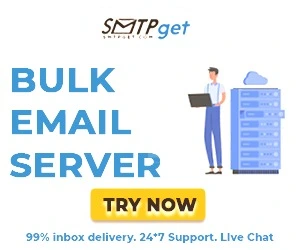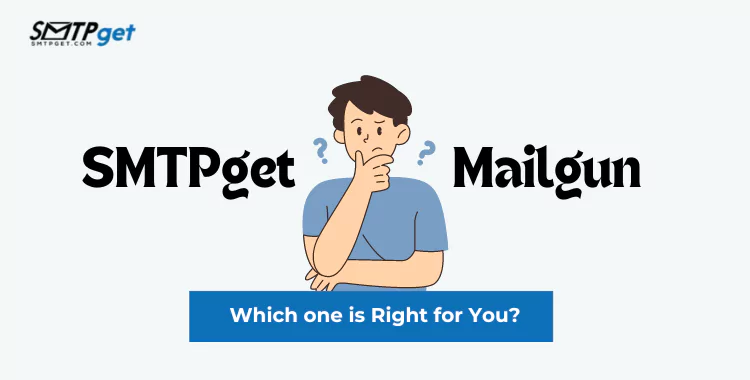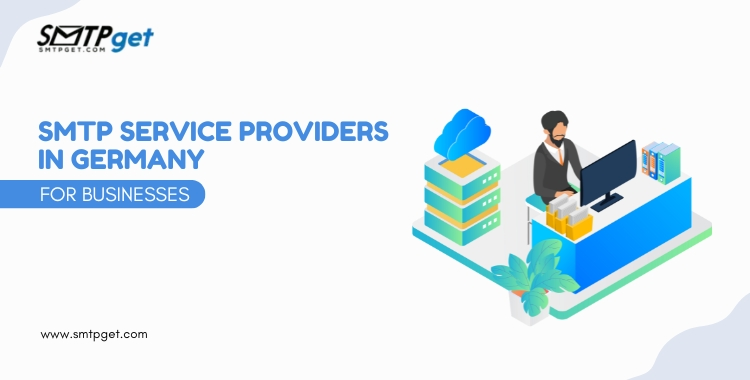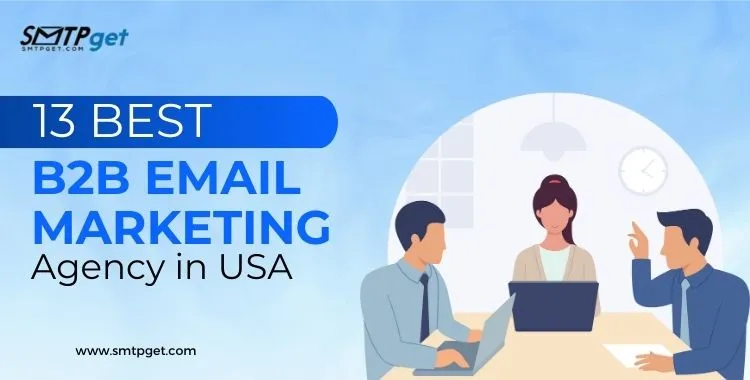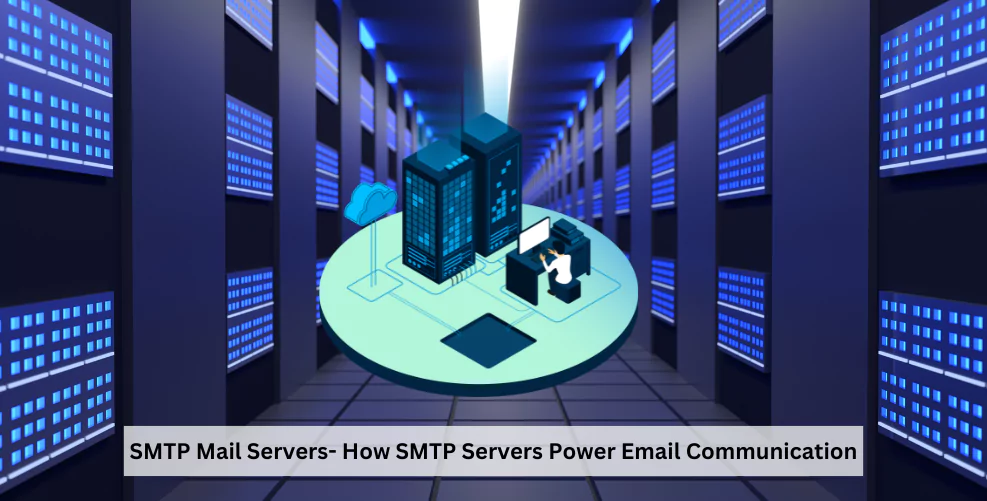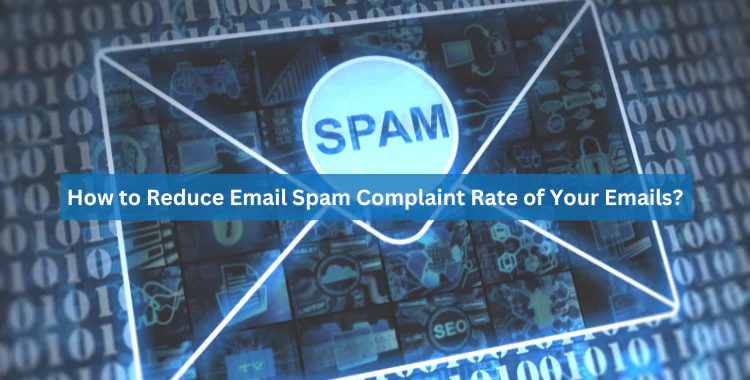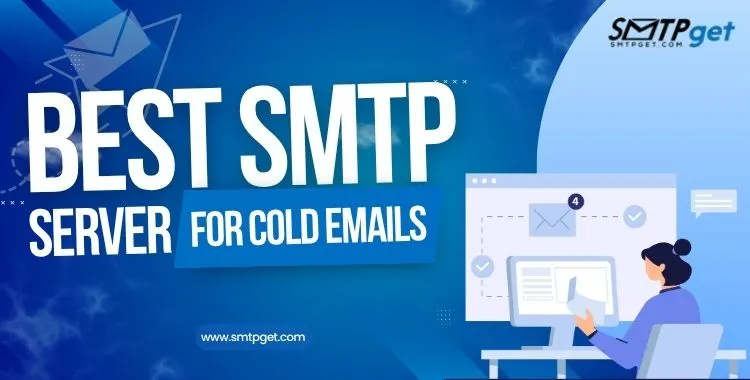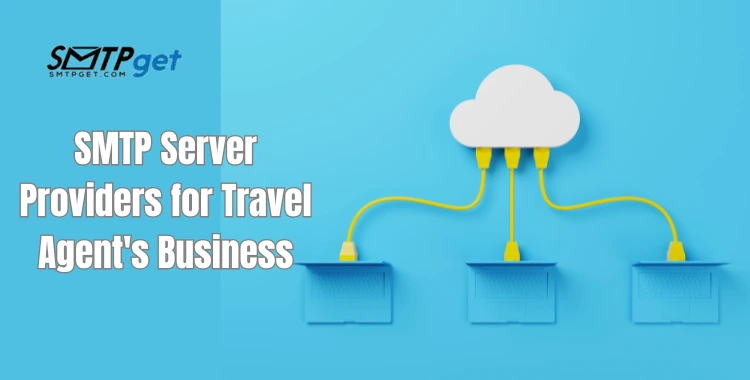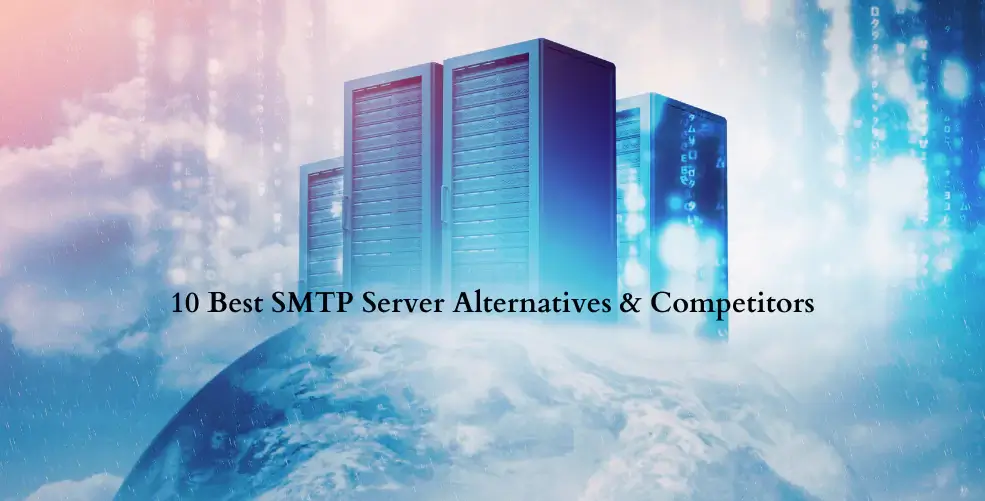Prospecting for business is a time-consuming process requiring a significant amount of work. We’ve got you covered, from trying to find a new consumer to sending your bulk personalized email to Gmail in their spam bin. The latter frequently occurs, resulting in lower engagement while you, as a salesperson, are attempting to break the ice.
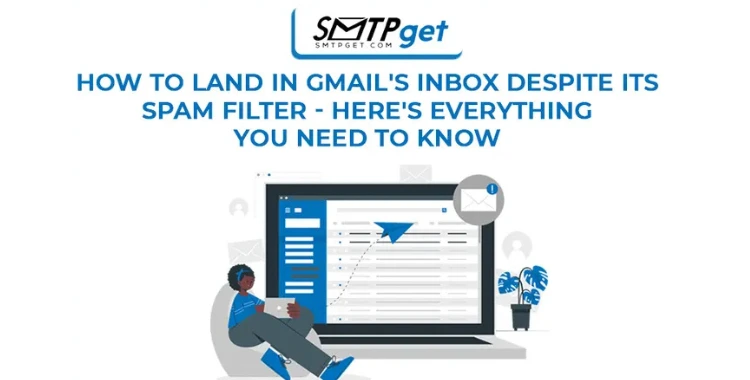
Due to spam and marketing filters, 17 percent of emails sent don’t ever reach the main inbox folder and the mail keeps going to junk it was a type of curse for a company or a business that was mostly dependent on How to Land in Gmail Inbox for leads so it was mandatory for these types to know how to stop emails going to junk in Gmail.
Also for getting your message in the inbox Gmail you can bulk email marketing server.
Our Pricing:
| Pricing | Cheapest Plan | Standard Plan | Professional Plan |
| SMTP Server Services | $110 | $165 | $220 |
| Bulk Email Server | $50 | $145 | $225 |
| Bulk Email Service | $30 | $110 | $220 |
How to avoid spam in Gmail?
Before we get into the subject, of how to prevent emails from going to spam Gmail let’s look at why you should be concerned about spam delivery to your Gmail account.
By controlling expectations and implementing changes and corrections sooner in the sales process, we will be able to comprehend the phenomenon better. you can get rid of this spam problem with the help of bulk email service provider.
What effect do spam emails to Gmail have on you?
When your sales emails are in Gmail’s spam folder it’s not just because your prospecting efforts failed; it’s also because of the junk mail filter Gmail and it has far-reaching repercussions beyond poor response rates. A higher percentage of your emails are likely to be routed through Gmail spam filters, which influences conversion rates later in the process.
This means that almost all your emails will end up in spam folders instead of reaching your prospects’ primary inboxes. As a reason, your initial emails, and follow-ups (steps) go unread if you send bulk emails in Gmail, rendering your outreach attempts ineffective. Your sales cycle will be slowed, the yield will be reduced, and your bottom line will suffer.
Do you have a problem with Gmail deliverability?
How can you know if your Gmail users aren’t receiving your messages? Analyzing the reach and engagement of people using other software or platforms, such as Yahoo!, Hotmail, or Microsoft Outlook.com, is one way to spot a problem.
If, for example, the average engagement rate of a mail sent out to Yahoo! members are 30% but just 5% for Gmail users, your email keeps going to spam Gmail rather than the inbox.
How does Gmail’s spam filter function?
Gmail offers a mix of both AI and machine learning in its spam filter. Here’s how Gmail’s spam filter works:
- Your email sending domain’s reputation – Gmail checks to see if your site and IP address are listed on any blacklists. You must demonstrate that you are an authorized sender. If your website passes the first test, the content is the next thing it looks at.
- Your email’s content– Gmail scans one’s email content for malicious links and spam or promotional words.
- The user’s action- Gmail evaluates your user interaction after your email meets all of the following criteria. First, they look to see if your receivers are deleting your email before ever opening it because the subject line is false or irrelevant to them. Second, if your mail is routinely flagged as spam by your recipients.
How to Keep Email Out of Spam
Any advertising or sales staff must know how to set up a spam filter in Gmail. The following are effective methods and spam filter-checking tips to assist you in getting into Gmail subscribers’ inboxes and avoiding future deliverability issues also take the help of smtp server provider.
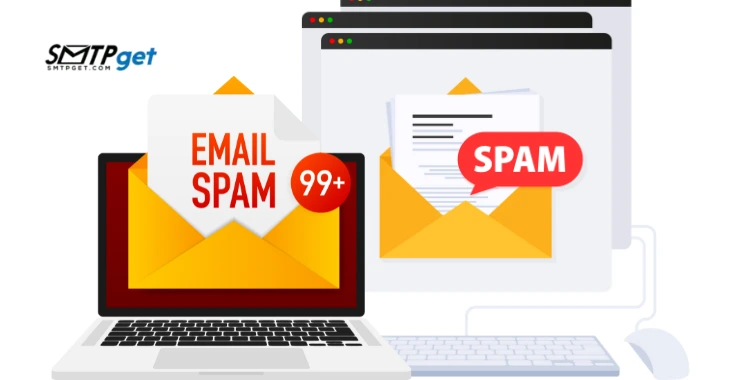
1. Before you reach out, make a warm connection
Out-of-context, unsolicited emailing is one of the leading causes of a low number of respondents and spam reporting. When prospects receive communications from unknown sources, they are less likely to open them and respond to them. Most buyers and email campaigns are like this.
You can start a dialogue with your target outside of email if you connect with them on social media networks like LinkedIn or Twitter. When compared to email, social media channels are important in your email marketing effort and are less noisy, and encourage more connection and networking than email allows.
Suppose your potential consumers use some of the unique and unusual social media platforms that aren’t available in your area. In that case, you can employ various services to secure contacts and expand your sales outreach.
After you’ve introduced yourself and started speaking on social media, you can continue the conversation via email, which is more likely to be opened and responded to:
2. Examine the email’s content
Check to discover if the information is to blame if you’re having problems with delivery. Begin by how to send personalized mail in Gmail a neutral text to a Gmail address containing the “from” address, sending domain, and IP address, utilizing your existing sending infrastructure.
Break up the content of the issue email and send it in chunks to see if the error is in the subject field or message copy if it doesn’t get passed to Google garbage mail. Also, keep in mind that an image or a link could cause a Gmail deliverability Problem.
3. Tell your subscribers to keep an eye out for your emails
The most frequently opened emails are those that verify a purchase or a new membership. So, use them to remind your subscribers to watch future promotions and examine their spam bins if they don’t.
It’s conceivable that people set up an email policy or junk filter that prohibits or flags your email and content as spam. You would like to remind your customers how to configure Gmail rules, such as clicking the “not spam” button if they discover your email id in their spam folders, which will inform Google that they want to get your email campaigns.
4. Keep a check on your engagement stats
Do your email recipients open and click on your messages? Or do they ignore your email campaigns and delete them without opening them, unsubscribe, or notify them as spam? Gmail uses such engagement measures to decide if its users want your emails.
If your subscribers haven’t read or opened your emails in a specific amount of time, such as six months, you might consider executing a re-engagement campaign. You’ll be able to identify subscribers who aren’t interested in getting your emails this way, and you’ll be able to eliminate them from your mailing list.
5. Make unsubscribing as simple as possible
How simple is it for users to opt out of your email list? Is it a one-button operation? Is it simple to locate and click the unsubscribe link? Do you reply to unsubscribe requests promptly? If consumers can’t unsubscribe, they’re more willing to rate your emails as spam, which will harm your email reputation.
6. Create a subscription process that is opt-in only
Google advises utilizing a dual opt-in membership process, which entails delivering a follow-up message to each subscriber, which they must respond to and click on. Furthermore, Google advises against using opt-in checkboxes that are pre-checked.
7. Request that subscribers add your “from” email to their Gmail contacts list how
This will prevent Gmail from automatically forwarding your emails to recipients’ garbage bins.
8. Consider using a private domain and a dedicated IP address
This is a crucial step in ensuring that Gmail’s authentication strategy is followed. In a previous piece, we addressed the importance of the IP address and domain name in email deliverability.
Also, employ an IP ramp-up method when becoming a “new sender” with a new Bulk email server: Begin by sending a small number of emails and progressively increasing the number over several weeks.
9. Do not rely on a pre-purchased email list
Many people consider purchasing an email list to expand their audience swiftly. However, receivers on that database are more prone to designate your unwanted emails as spam because they don’t recognize you; thus, your emails will land up in the spam folder.
In addition, smtp service providers and other companies will classify you as spam since they utilize new spamming traps to identify persons who buy email lists. All businesses want you to grow your list organically rather than purchasing one. As a result, it’s preferable to avoid buying a list.
10. Make use of spam detection software
Spam scanners are online tools that examine your email for things like spam assassin scores, DKIM, and SPF. They’ll next generate a report showing how spam filters rated your emails.
If you don’t plan to spam, you shouldn’t have to worry about getting caught in the spam box. On the other hand, taking precautions is never a bad idea, and getting approval from your customers might enhance your deliverability tremendously.
How to send emails to the inbox, not junk
Do you know that working on your email marketing is a job: writing a newsletter, segmenting the public, maintaining interest, strategy, and content… if you don’t take care of deliverability, it’s useless.
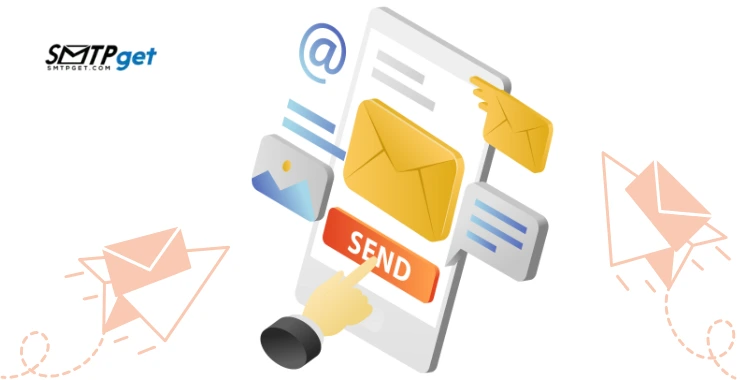
If you don’t understand how to get your emails to reach your subscribers’ inbox, you’re wasting hours and money in the trash. It’s like buying an Audi A6 to go 60 in the middle lane: you could save a lot of money to achieve the same result.
Getting your emails delivered to the main inbox is not easy. Out there, the web is a jungle full of anti-spam algorithms. Your mail has to bring out its best weapons to reach your destination intact and without a scratch. Sometimes it arrives but somewhat damaged, other times only in pieces, and other times it falls by the wayside.
What can you do to guarantee a correct delivery?
You can’t guarantee it. This is the first rule you must accept. It sucks to read, I know, but you better know now before you jump into how to send spam emails to your inbox. You must firmly and tearfully accept that some of your emails will never be read.
You cannot guarantee it, but you can provide your emails with the use of how to use smtp server for sending emails so that they reach their destination in the best conditions. And this is what this post is about: improve your deliverability.
What is deliverability?
It is the ability of your email to reach the inbox. It’s that simple (and complex). As users, we LOVE not having a tray full of emails that offer us to enlarge our penis or inherit from an African relative, but as marketers, we hate being in the same category.
We can measure deliverability in 4 big results:
- Your mail arrives in the inbox intact = You are the master
- Your email arrives partially or goes to the Gmail promotions tray = good deliverability
- Your email goes to the spam folder = we have a fixable problem
- Your mail dies in cyberspace and does not arrive = you have a serious problem
How can you improve your deliverability?
The first thing to clarify is that deliverability, like the problems of life, is divided into 3 spheres: the one that you can activate, the one that you can influence, and the one that does not depend on you.
You must worry about having the first impeccable, controlling the second, and understanding how the third works so as not to burden yourself with the work of the other two.
Improvements that do not depend on you (but that you must understand)
Antispam algorithms, like positioning algorithms, mutate, evolve, and are quite opaque. There is no perfect recipe for how to get to position 1 in Google or how to land in the inbox. We rely on facts, data, and observations.
This is the part you can’t control: one day your emails may start being delivered as spam without you changing anything. That’s why you have to be aware and analyze results to take quick action, but you can’t avoid it in itself.
It is important to understand that deliverability is collective, not individual. As you send your emails through an SMTP relay service provider or Active Campaign, all emails go out in similar conditions: yours and the neighbor’s.
The prestige of your provider against spam algorithms influences how your emails are delivered, but the behavior of your Mass email server neighbors is even more important.
If your server neighbor has a shitty list, your emails smell bad. Hence, there are fewer and fewer free providers: free users tend to have M lists, more than paid ones. If an email marketing provider allows their clients to have lists in any way, that affects everyone: those who pay and those who do not.
Improvements that influence
This is where we find the “deep” decisions, the ones you make at the beginning and then are difficult to modify:
The decision on the provider of email marketing
Deliverability is the #1 reason why you shouldn’t do email marketing with just anyone because it’s free. In fact, the more free subscribers it allows, the more filth there will be inside and the worse your emails will be delivered. Point to part deserve those who decide to do email marketing from their own WordPress with Mail Poet_ or you know what an MX is or do not try it, please.
The desire to work
I told you in the first sentence: doing email marketing is a job, but not just generating and sending content: good email marketing is done in excel, my friend. To have constant and sound results, you have to dedicate time to measure, analyze and improve. There’s no more.
Does your head hurt just thinking about it? If you feel like it, I help you every month at Smtpget.com
Improvements that you must work on because they depend on you
These are elements that are 100% in your hands, they are the elements that you can modify to improve the reputation of your email.
Use a domain email
You cannot do email marketing from Gmail. ALL the spam in the world is done from free accounts. You have to prove that you are a legitimate business that sends important emails. That is not done from Gmail, Hotmail or yahoo.
If you can, use of SMTP mail server that already has a reputation, that is, an email that you use regularly and that people have saved in their contacts, your emails will reach the inbox more easily than if you use an exclusive email for news.
Keep your list clean
The reputation of your email depends on how to write cold email to people who exist. An impeccable list is a list where all emails are valid. A couple of examples:
- If someone signs up for your list and in a hurry writes “@gmial.com” instead of “@gmail.com” they will never receive your emails
- If your former boss changes companies and his old work email no longer exist, that subscriber no longer receives emails.
- How to improve the cleaning of your list?
- With the double opt-in activated
- With regular reviews
Boring non-promotional content
I know, you want your emails to be SUPER CUTE, but super cute emails are clearly promotional. On a day-to-day basis, you don’t write emails designed by a designer, therefore go for a Bulk email service provider.
An anti-spam algorithm knows that a boring email is a work email and lets it pass. An email with 3 photos, a “buy now” button, and a gif… doesn’t sound like a work email no matter how pretty it looks. BONUS track: if you work with large companies more than with freelancers, you have to know that Outlook blocks all the photos in your mail, so it’s not worth putting them.
The same with the title: “ now free, for a limited time ” is not a good title.
Can you use it one day punctually? Well of course! But if all your titles contain “free” at the end you load the reputation of your email.
